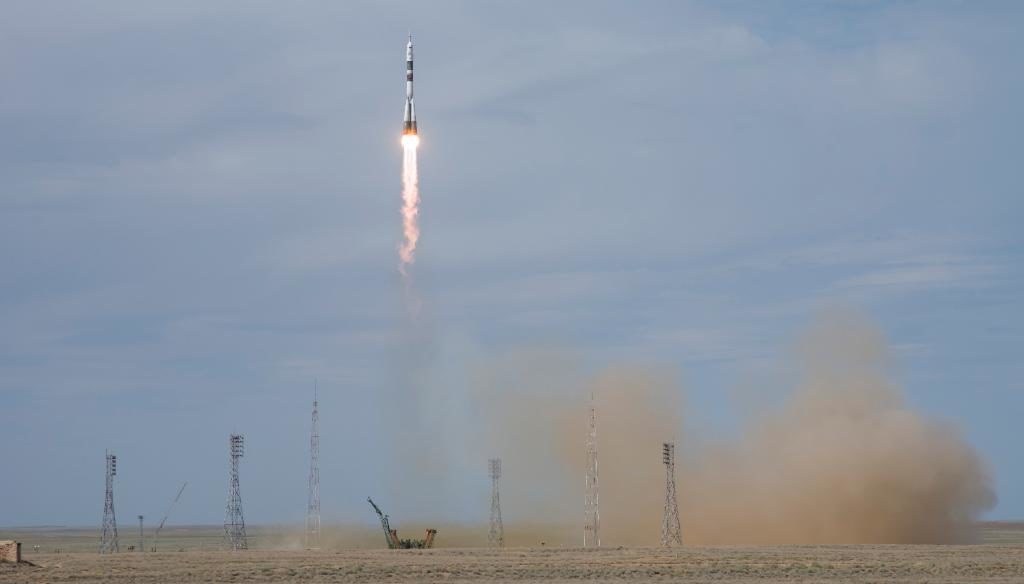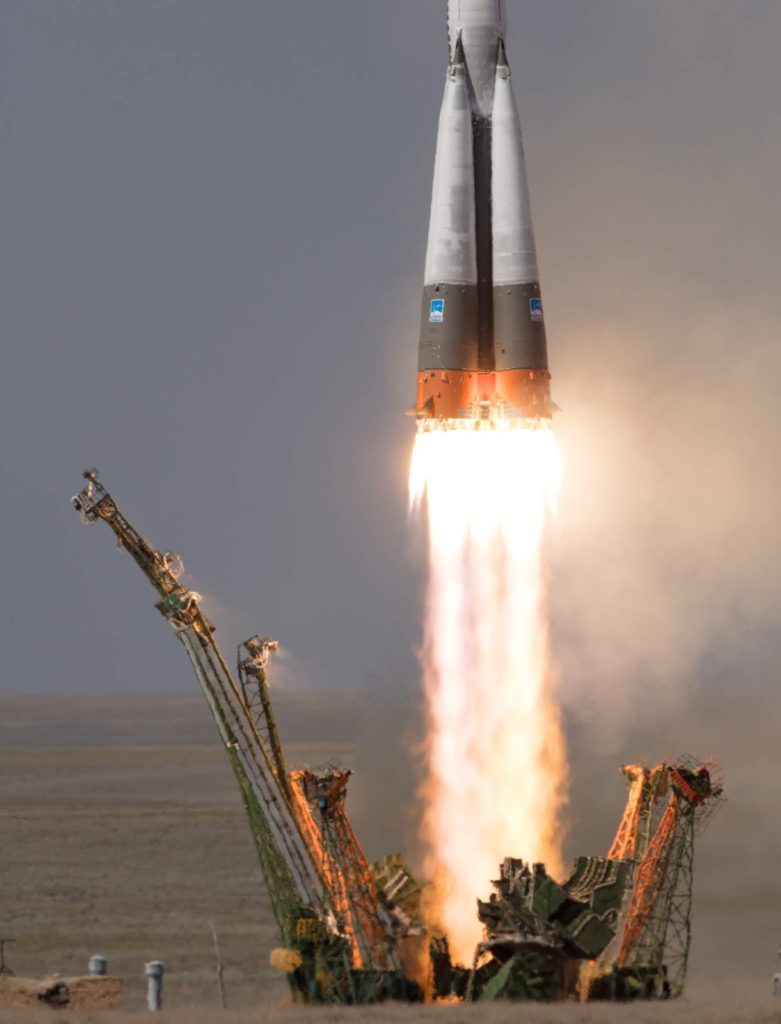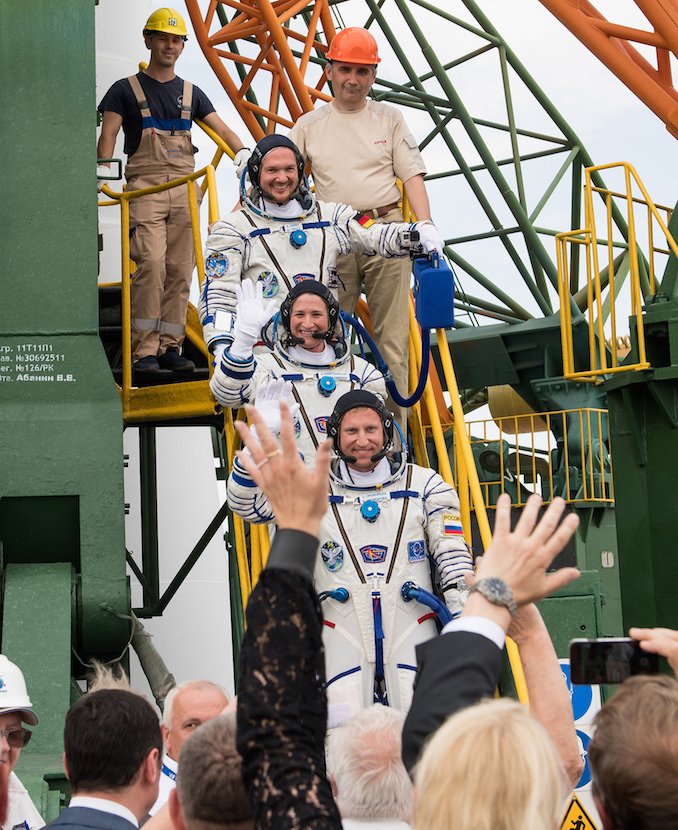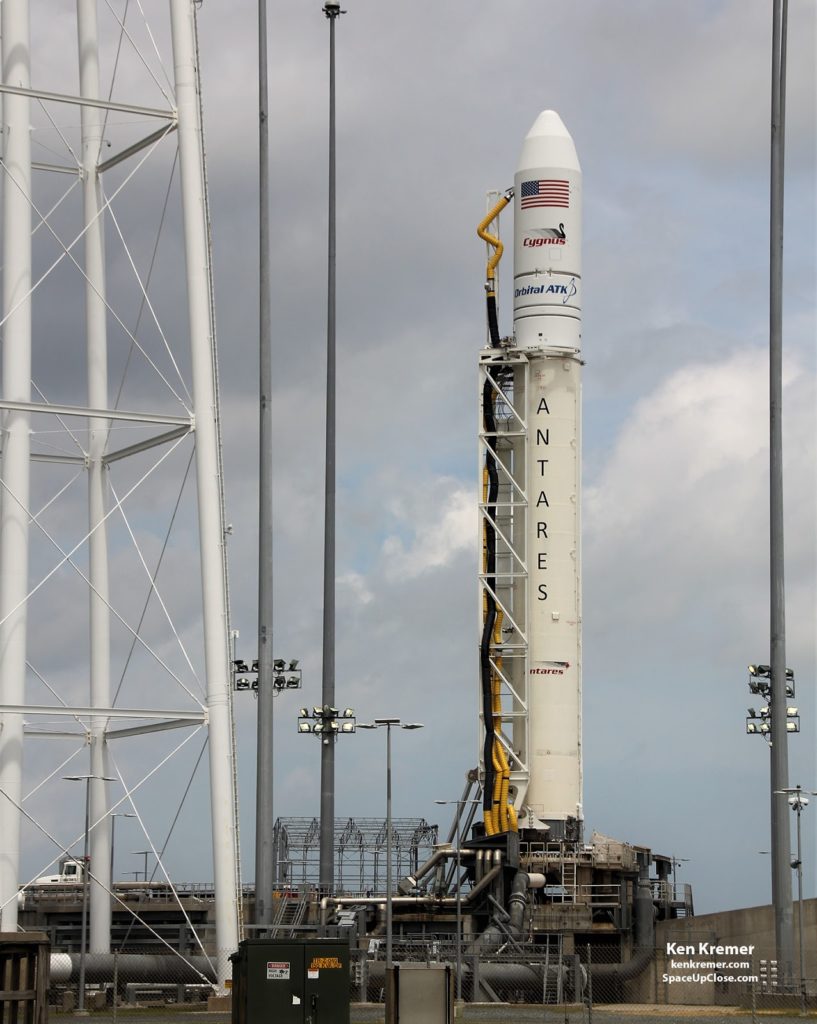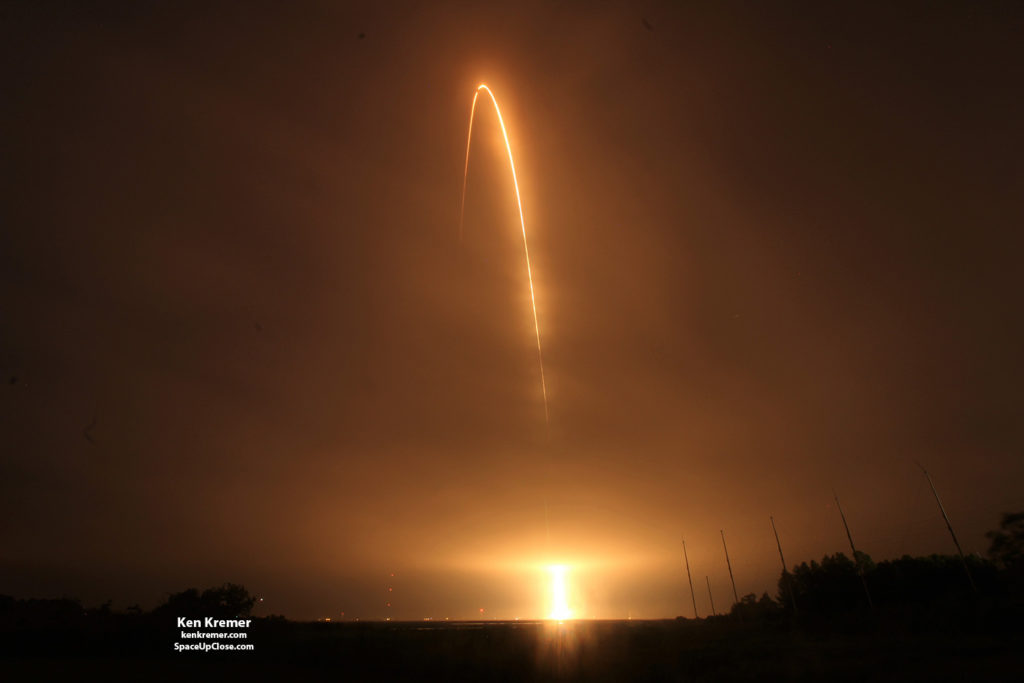Ken Kremer — SpaceUpClose.com — 6 June 2018
CAPE CANAVERAL,
FL – A German, American and Russian trio of astronauts and cosmonauts successfully
launched to the International Space Station (ISS) early this morning, June 6, propelled
to orbit aboard a Russian Soyuz capsule from the Baikonur
Cosmodrome in Kazakhstan.
trio comprising Expedition 56 Soyuz Commander
Sergey Prokopyev of Roscosmos, flight engineer Serena Auñón-Chancellor of NASA,
and flight engineer Alexander Gerst of ESA (European Space Agency) blasted off in
the Soyuz MS-09 spacecraft at 7:12 a.m. EDT Wednesday (5:12 p.m. Baikonur time) June 6.
Yuri Gagarin launch from on the first human spaceflight and at the time the launch
pad rotated into the plane of the stations orbit.
NASA commentators noted that the launch was attended
by US ambassador to Russia Jon Huntsman.
Germany’s ambassador to Russia was also present.
the first German to fly to space four decades ago in 1978. He represented what
was then East Germany and served aboard the Soviet Salyut 6 space station.
They began a two-day trip to the station that
will culminate with a rendezvous and docking to the space station’s Rassvet module on Friday, June 8 at 9:07 a.m. EDT
plans live coverage of the docking beginning at 8:15 a.m. on NASA Television
and the agency’s website.
of the opening of hatches between the spacecraft and station should start
around 10:30 a.m.
woman and two European men are embarking on a voyage for six month stay at the orbiting
outpost that will restore the station to its full crew complement of six people.
They will stay until December of this year
also assume command of the station later this year. Prokopyev and Auñón-Chancellor are on their rookie spaceflights.
first flew in 2014 on a 165 day long mission. Auñón-Chancellor was recently
added to the crew as a replacement for Jeanette Epps for undisclosed reasons.
safely returned to Earth on June 3 in another Soyuz capsule that made a soft
landing in the steppes of Kazakhstan.
will join Expedition 56 commander Drew Feustel
and flight engineers Ricky Arnold
of NASA and Oleg Artemyev of Roscosmos.
conducting about 250 science
investigations in fields such as biology, Earth science, human
research, physical sciences and technology development,” says NASA.
crew size on the U.S. segment from three to four, allowing NASA to maximize
time dedicated to research on the space station. Highlights of upcoming
investigations include a new facility to study ultra-cold
quantum gases, the first commercial
European facility to conduct microgravity research, and a system
that uses surface forces to accomplish liquid-liquid
separation.”
Cygnus OA-9 cargo freighter carrying tons of research experiments, gear, food,
water, spare parts and more vital to their stay on the station.
resupply launch from NASA Wallops in Virginia in May.
launch involves the Dragon CRS-15 cargo resupply mission to the International
Space Station (ISS) – tentatively set for liftoff on no earlier than June 28
from Space Launch Complex-40 at the Cape.
Boeing, Lockheed Martin, Orbital ATK and more space and mission reports direct
from the Kennedy Space Center, Cape Canaveral Air Force Station, Florida and
Wallops Flight Facility, Virginia.
Stay tuned here for Ken’s continuing Earth and Planetary science and human
spaceflight news: www.kenkremer.com
–www.spaceupclose.com – twitter @ken_kremer – email: ken at kenkremer.com


